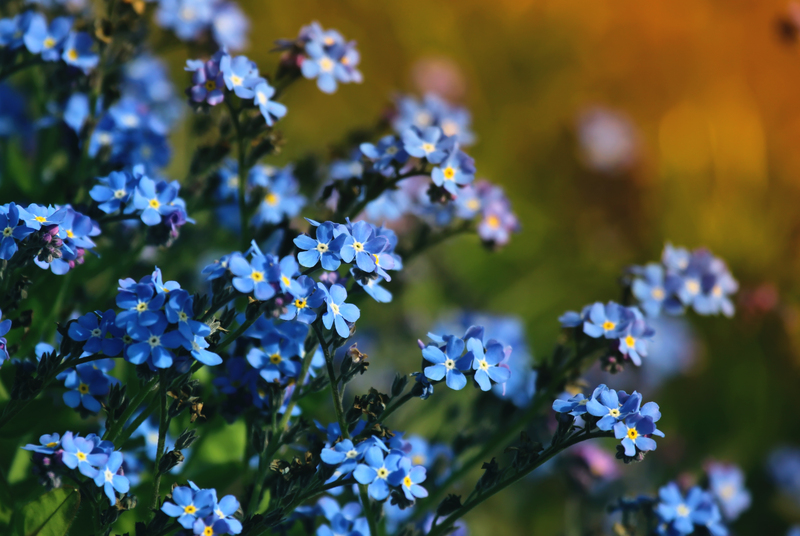Green Your Thumb with These 9 Essential Gardening Tips
Posted on 27/05/2025
Green Your Thumb with These 9 Essential Gardening Tips
Unlocking a lush, thriving garden doesn't have to be a mystery. Whether you're a seasoned horticulturist or a curious beginner, learning how to green your thumb can be a joyful and rewarding experience. In this comprehensive guide, we'll explore nine essential gardening tips that will help you nurture abundance right in your backyard. Cultivate health, beauty, and sustainability by following these tried-and-true gardening best practices.
Why Green Your Thumb? The Benefits of Gardening
Gardening is more than just a hobby--it's a way to promote healthy living, reduce stress, and enhance your outdoor environment. By developing your gardening skills, you'll not only enjoy beautiful flowers and tasty vegetables but also contribute positively to the ecosystem. Green thumb gardening tips are especially valuable for making sustainable choices that benefit your family and the planet.

1. Start with the Right Soil
The foundation of any great garden is healthy, fertile soil. Quality soil supports strong plant growth, improves water retention, and provides essential nutrients. Before planting, take the following key steps:
- Test Your Soil: Use a home testing kit to check pH and nutrient levels.
- Add Organic Matter: Mix in compost, leaf mold, or aged manure for optimal nutrition.
- Amend as Needed: Adjust pH or mineral content according to plant needs.
Remember: Healthy soil is the cornerstone of successful gardening!
2. Choose Plants Suited to Your Climate
Selecting the right plants for your environment is essential for a flourishing garden. Native species or plants adapted to your region require less water and maintenance, making them ideal for budding gardeners wishing to green their thumb naturally.
- Check your USDA Hardiness Zone before buying plants.
- Ask local nurseries for recommendations.
- Consider drought-tolerant or pest-resistant varieties for easier care.
Choosing wisely ensures your efforts are rewarded with robust, long-lasting growth.
3. Practice Proper Watering Techniques
Watering seems straightforward, but many beginners either overwater or underwater their plants. For optimal gardening success, follow these guidelines:
- Water early in the morning to reduce evaporation and prevent diseases.
- Deep watering encourages roots to grow farther down, increasing drought resistance.
- Use soaker hoses or drip irrigation for efficient moisture delivery.
- Check soil moisture by sticking your finger an inch below the surface.
4. Feed Plants with the Right Fertilizer
Plants, like people, need balanced nutrition. Over-fertilizing can burn roots, while under-fertilizing leads to languid growth. To green your thumb with these proven fertilizing tips:
- Read labels to choose the right fertilizer for your plants' needs.
- Apply organic fertilizers to build soil health over time.
- Follow a regular feeding schedule, but avoid heavy fertilizing in extreme heat.
5. Mulch for Moisture and Weed Control
Mulching is a simple yet powerful way to boost your garden's health. It helps retain moisture, moderates soil temperature, and suppresses weeds--all essential for improving your green thumb in gardening. Effective mulching strategies include:
- Apply a 2-3 inch layer of straw, bark chips, or shredded leaves around plants.
- Keep mulch a few inches away from plant stems to prevent rot.
- Refresh your mulch annually for consistent benefits.
6. Prune for Healthier, Happier Plants
Pruning isn't just for aesthetics--it's crucial for maintaining plant health and maximizing productivity. Regular, strategic pruning promotes airflow, prevents diseases, and encourages new growth.
- Remove dead or diseased branches promptly.
- Prune flowering shrubs after they bloom for the best effect.
- Use sharp, clean tools for tidy cuts and minimal damage.
Pruning can seem intimidating at first, but with practice, it becomes an essential skill that will transform your gardening results.
7. Attract Beneficial Pollinators and Insects
A vibrant garden ecosystem relies on bees, butterflies, ladybugs, and other helpful insects. These pollinators boost flower and vegetable yields while natural predators reduce pest populations.
- Plant native flowers such as coneflower and milkweed.
- Avoid broad-spectrum pesticides that can harm beneficial bugs.
- Provide food, water, and shelter to encourage biodiversity.
Cultivating harmony in your yard is a core aspect of expert gardening for a green thumb.
8. Rotate Crops and Diversify Plantings
Crop rotation and diversity are critical for long-term garden vitality. Growing the same plants in the same place year after year depletes soil nutrients and encourages diseases and pests. To keep your gardening efforts thriving:
- Change planting locations for annual vegetables each year.
- Mix flowers, herbs, and vegetables in beds for disease resistance.
- Experiment with companion planting for natural synergy.
Diversified gardens are resilient, colorful, and productive!
9. Monitor and Respond to Garden Pests Naturally
Pests are a part of every garden, but chemical pesticides are rarely the answer. Developing an organic pest management strategy preserves beneficial wildlife while protecting your crops. Tips include:
- Hand-pick beetles, caterpillars, or aphids off plants.
- Use insecticidal soap, neem oil, or homemade sprays for severe infestations.
- Encourage birds and predatory insects in your garden.
By using gentle solutions, you create a balanced garden environment.
Bonus Tip: Stay Observant and Keep Learning
The most successful gardeners know that practice makes perfect. Observe your plants closely--notice changes in color, growth, or pest activity and respond accordingly. Join gardening clubs, read books, or follow gardening blogs to deepen your knowledge.
- Keep a gardening journal to track successes and challenges.
- Ask for advice at your local garden center.
- Never stop experimenting and learning from nature!
Green Thumb Gardening Tips for Small Spaces
Not everyone has acres of land or raised beds to work with. Urban gardeners can enjoy lush harvests using container gardening or vertical plantings. Here's how you can green your thumb no matter your space:
- Choose dwarf or compact plant varieties.
- Use hanging baskets or wall-mounted planters for vertical interest.
- Group containers to create lush, microclimates on patios or balconies.
Small spaces can burst with flavor and fragrance when you put these essential gardening tips for beginners into action.

Conclusion: Embrace the Joy of Gardening
A successful, sustainable garden is within reach for everyone--regardless of your starting skill level. By applying these 9 essential gardening tips, you'll develop your green thumb naturally, fostering a beautiful, resilient oasis for yourself, your loved ones, and local wildlife.
Start today: Test your soil. Choose the right plants. Water and tend them with care. With patience, observation, and these expert secrets, your garden will thrive--season after season. Happy gardening!
Frequently Asked Questions: Gardening Tips for a Greener Thumb
- What is the most important tip for new gardeners?
Start with healthy soil and the right plants for your area to ensure a strong foundation for your garden. - How often should gardens be watered?
Generally, gardens need about 1 inch of water per week, but this varies by plant type, soil, and weather conditions. - Are chemical fertilizers harmful?
Overuse can damage soil life and pollute waterways--opt for organic fertilizers and compost for a more sustainable approach.
For more gardening inspiration, explore new plants, experiment with techniques, and connect with your local gardening community. The more you nurture your garden, the more it nurtures you in return!



